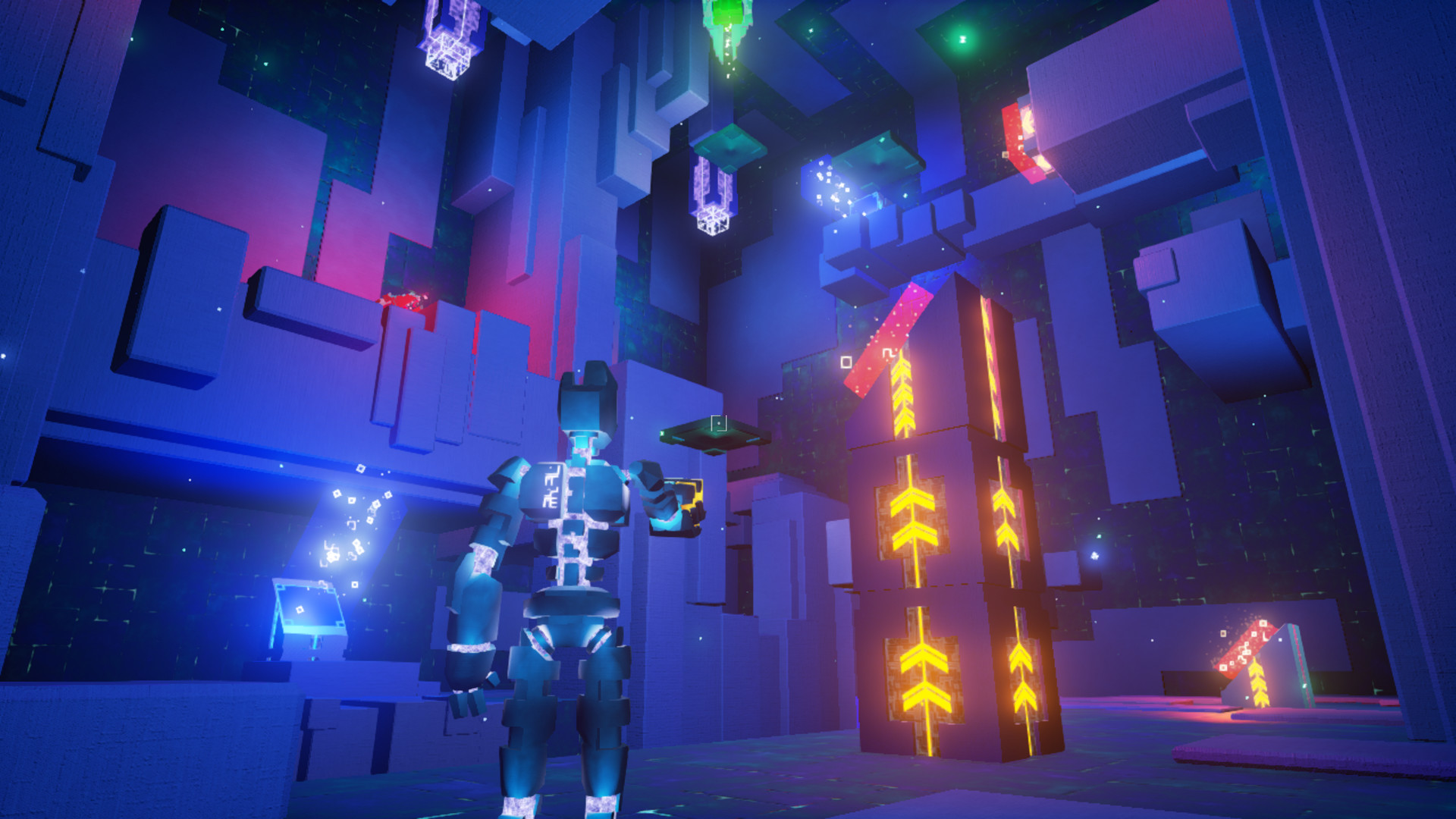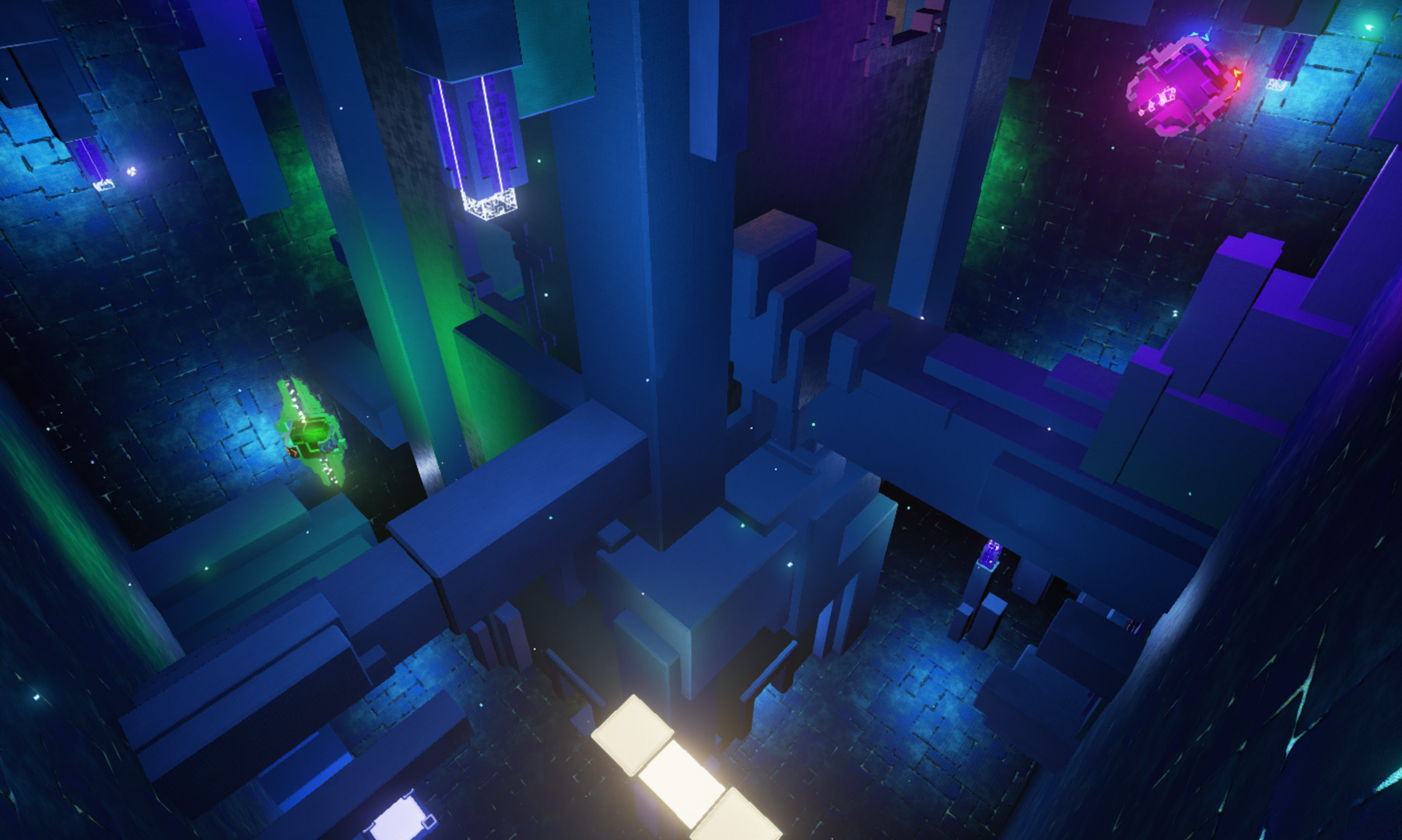Search
[{{{type}}}] {{{reason}}}
{{/data.error.root_cause}}{{{_source.title}}} {{#_source.showPrice}} {{{_source.displayPrice}}} {{/_source.showPrice}}
{{#_source.showLink}} {{/_source.showLink}} {{#_source.showDate}}{{{_source.displayDate}}}
{{/_source.showDate}}{{{_source.description}}}
{{#_source.additionalInfo}}{{#_source.additionalFields}} {{#title}} {{{label}}}: {{{title}}} {{/title}} {{/_source.additionalFields}}
{{/_source.additionalInfo}}Anomaly 1729 (PC)

Anomaly 1729
Developed By: Anvil Drop, LLC
Published By: Black Shell Media
Released: December 30, 2015
Available On: Windows
Genre: Third-Person Puzzle Platformer
Number of Players: 1
Price: $9.99
The world of Phiohm is vast and clean. Countless nanites shape its landscape and keep the world orderly, driven by a central intelligence. In general, Phiohm is calm, with few surprises and even fewer problems. But in a remote corner of this world, a being suddenly gains cognizance and becomes self-driven. For the 1729th time, an anomaly begins to wander Phiohm.
Anomaly 1729 is a puzzle platformer that falls somewhere between Portal and a Rubik’s Cube. Taking control of the titular Anomaly 1729, a freshly-sentient robot that dubs itself Ano, you move through the atmospheric world of Phiohm while solving puzzle rooms presented by an omnipresent voice. The main mechanic involves rotation: using Ano’s “messenger” arm cannon, you shoot packets of blue or orange data. Striking the floating cubes suspended in the air rotates the entire room 90 degrees in the indicated direction – blue shots move the room in one direction, orange the opposite. While some puzzles restrict the room’s movement, there are usually one or more cubes representing each of the three axes of rotation. As Ano stays in place during these rotations, reaching the exit of each puzzle chamber requires proper positioning and forethought to either move the platforms to you or change gravity to make Ano fall where you need to go.
The game slowly introduces a few more mechanics as you progress: platforms that won’t rotate with the room (and thus keep Ano in place as well), pads that repel or attract Ano depending on their coloration, fields that restrict your abilities, and so on. These additions are usually given their own section free from the other gameplay elements, allowing you to adapt to them alone before they’re integrated into the chambers. This is done through a series of hub areas; moving to a puzzle room requires solving a less intensive test, usually free of rotation, as a sort of preview to the main attraction. By the end of the game, the chambers are packed with so many elements that they become quite complex and require a lot of spatial awareness to piece together.
Ano controls well enough, with the two mouse buttons firing the blue and orange shots and spacebar to jump. The jumps are a little floaty, but Ano gets more height than it appears and the platforms give significant leeway for error. In addition, you have a small amount of air control, so accurate jumping is rather easy. Ano does retain momentum from any source, which can be a little troublesome when jumping from moving platforms. Overall, Ano’s controls are simple and it’s easy to move around Phiohm – almost too easy, as the next point illustrates.

Strong Points: Neat concept; most puzzles are clever and satisfying to solve
Weak Points: Everything looks similar; easy to get lost; can get permanently stuck at times
Moral Warnings: Game implies you’re hurting nanites every time you change something
The room for error the platforming gives you, while making the necessary jumps forgiving, also allow for some serious sequence breaks. Each puzzle has an intended solution, but the travel time of your messenger shots, along with Ano’s air control, allows for what are likely unintentional results. Since Ano freezes in place while the room rotates, clever jumps, controlled falls, and well-timed shots can combine to skip large portions of a chamber. It’s hard to tell if this technique is an accidental quirk of the game engine or a purposeful system to reward players thinking outside the box. Either way, it’s both a blessing and a curse: cheesing out a puzzle that way can feel rewarding, but is an ultimately hollow victory – and doing it accidentally feels like cheating.
The potential use of such possibly-illicit means of puzzle solving is exacerbated by the game’s main flaw: you really can’t tell where you need to go most of the time. Graphically, the game looks nice, being essentially a mix of Mirror’s Edge and Tron – most of the environments are solid whites, blues, and oranges, with bright neon lines cutting through the landscape. However, everything looks mostly the same; the first hub guides you to new locations by darkening where you’ve been, and puzzle rooms start and end with automated doors, but a lot of the middle portion of the game is a maze of white walls and blue pillars. Add to the fact that the game intends for you to climb above, run on top of, and jump between the walls, it’s a little too easy to lose track of where you’ve been and where you need to go.
In addition, your actual goals don’t stand out too much and are easy to misplace. There are two object types to find in order to progress: the aforementioned puzzle room doors, and podiums. The podiums are half the size of Ano, and will either reveal story elements or manipulate the room in some fashion. Neither of them stand out from the rest of the world in any meaningful way: doors have glowing red or green text but are otherwise another part of the wall, and podiums have no discernible markings to draw attention. It’s even worse in the puzzle chambers, as trying to keep track of a tiny podium in the midst of spinning the room every which way becomes extremely difficult. Likewise, entrance doors don’t turn off or otherwise differentiate themselves from the exit doors, and it’s entirely possible to accidentally wind up back at the start due to losing track of which door you’re moving toward. A simple glow or neon marking on your targets would go a long way to keeping the player oriented, but as it stands it’s too easy to completely lose your way and wind up undoing progress by mistake.
When they work, though, the puzzles are challenging and satisfying to solve. The rotational aspect of the game takes some getting used to, but eventually you’ll learn to see paths on the walls and ceilings, adding a refreshing layer of verticality. Taking your time and thinking through your moves is a must, as random rotation will get you nowhere most of the time. While most rooms are airtight in their design, a few have areas where you can get permanently stuck – in one case, a bounce pad tossed Ano short of the mark and down an inescapable hole, with no option but to return to the last checkpoint and start over. Overall, however, each puzzle is significantly different from the others, and the different platform types and restrictive fields make for varied gameplay.

Higher is better
(10/10 is perfect)
Game Score - 77%
Gameplay - 13/20
Graphics - 8/10
Sound - 8/10
Stability - 5/5
Controls - 4.5/5
Morality Score - 98%
Violence - 9/10
Language - 10/10
Sexual Content - 10/10
Occult/Supernatural - 10/10
Cultural/Moral/Ethical - 10/10
The game offers some semblance of a story, but it’s a little simple and moves too fast. When Ano awakens, he’s led by the “voice of Phiohm,” who calls himself Yuler. Ano makes it immediately clear that he wants to see all of Phiohm and what lies beyond, and Yuler guides him along. However, Yuler isn’t particularly consistent: one moment he’s encouraging Ano to explore and move on, but as Ano goes down the only path available to him, Yuler starts demanding Ano turn back and forget everything. There’s a brief moment when Ano worries that he’s hurting the nanites that make up Phiohm when he manipulates them, but there’s never an in-game implication of pain and the whole topic is dropped after the first hub area. At the final hub, Ano declares that he understands the purpose of Phiohm and the nanites; suffice it to say it would’ve been nice of him to share that information with the audience.
In addition, the story is told in subtitles of a fictional language that is not translated for you at the start. Instead, the first hub world holds its own podiums which translate a few letters at a time. It’s a neat idea, and you don’t lose any vital information before you have enough letters to understand the text, but it’s entirely possible to miss one and go the whole game with an imperfect translation – the game makes these podiums rather obvious, but it’s still an odd choice. Later hubs have podiums that tell the story of another anomaly that came before Ano, and are much harder to find, especially with the aforementioned lack of visual cues. Even so, the conversations between Ano and Yuler are nice distractions in between puzzles, and the story overall adds more than it takes away – and you can simply turn the story off in the menu if you so desire. There are two endings, but the first is rather unsatisfying and skips the final puzzle, so it’s only worth seeing on replays. Upon beating the game, you can start over with your translations intact; it may seem strange to replay a finite puzzle game, but the variable solutions make it worth another playthrough.
As mentioned before, the graphics suit the atmosphere well; the neon lines turn orange and pulse when Yuler is talking, which is a nice touch. All the neon strains the eyes after a while, though, and maneuvering the camera too close to a light source can mess up the rendering and make rooms too dark to navigate even after moving the camera away. Audio-wise, there are few faults to find. The soundtrack is made up of calm ambient music that turns more intense when in a puzzle chamber, and the sound effects are fitting and never grate on the ears. The song for the final hub is the only downside, as it contains a sound that can only be described as a sneaker squeaking on hardwood, which can get irritating when trying to figure out the final puzzles. Still, the majority of the songs are easy on the ears, and the seamless transition into and out of the puzzle variants is an aspect more games should use.
Morally, the only aspect worth noting is the aforementioned nanite abuse, and even that is up for interpretation. Yuler insists the nanites are not sentient, but never denies Ano’s claim that he’s hurting them. Again, however, there is no indication that Phiohm’s nanites react poorly to Ano’s manipulation. Ano himself is disturbed by his potential assault, and cites it as one of his main reasons for wanting to leave Phiohm, so any violence is unintentional. Other than that, every aspect of the game is appropriate for all ages.
In the end, Anomaly 1729 is a game with interesting ideas marred by some design flaws. The core of the game works well, and most puzzles are difficult without becoming too frustrating, but the ease with which important objects fade into the chaotic background makes some chambers more annoying than others. Still, puzzle game fans will likely get their money’s worth – though if you prefer your challenges two-dimensional, you might want to wait for a sale.
-Cadogan








